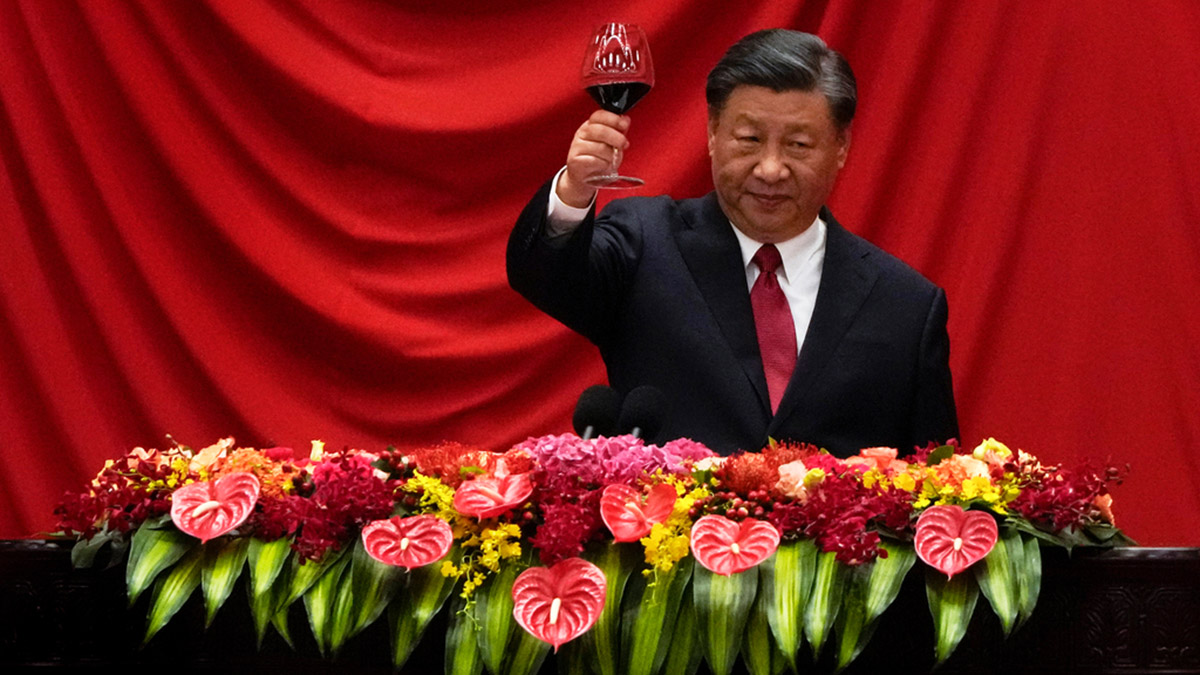The U.S.-China trade war is back in full swing, and this time it could lead to significant shake up. President Donald Trump has ramped up his offensive, slapping a hefty 20% tariffs on all Chinese imports. In response, China isn’t backing down. Beijing has retaliated with tariffs of up to 15% on select U.S. goods, tightened export controls on American firms, and even taken the battle to the World Trade Organization WTO.
Despite these escalating tensions, China’s President Xi Jinping is sticking to his well-worn script of projecting confidence, stability, and resilience. And what better stage to do that than the country’s highly controlled annual political gathering known as the “Two Sessions”?
China’s ‘Two Sessions’
As thousands of delegates gather in Beijing for this carefully choreographed event, the message was loud and clear – China is a force to be reckoned with, and no amount of external pressure will alter its trajectory. The National People’s Congress, NPC and the Chinese People’s Political Consultative Conference, CPPCC will spend the next week reinforcing Xi’s vision for the nation – a high-tech superpower that remains unfazed by U.S. aggression.
While Trump is busy playing hardball with tariffs, China’s No. 2 official, Li Qiang, is expected to take the stage in Beijing, delivering a speech outlining the country’s economic and military ambitions. It’s a power play, a show of strength designed to state that China isn’t about to be bullied.
High-Tech is the Name of the Game
One of the biggest takeaways from this year’s Two Sessions is China’s unwavering focus on tech dominance. If Trump’s tariffs were meant to stifle China’s progress, they seem to have had the opposite effect.
Case in point is the Chinese AI firm DeepSeek that recently shocked Silicon Valley with the success of its open-source large language model. Meanwhile, China’s electric vehicle (EV) industry is going head-to-head with Tesla, proving that Beijing’s long-term investments in green technology are paying off.
Xi’s strategy is China will double down on high-tech advancements, pouring resources into AI, quantum computing, and semiconductor manufacturing. With the U.S. tightening restrictions on Chinese access to cutting-edge tech, China sees no choice but to develop its own. And if anything, the trade war is only accelerating this push toward self-sufficiency.
Cracking Down While Opening Up?
Despite Beijing’s outward confidence, there’s one area where China is feeling the pressure—private industry. After years of regulatory crackdowns on its biggest tech companies, Xi seems to be making a U-turn, at least on the surface.
Just last month, he held a high-profile meeting with China’s top tech executives, calling it “prime time” for private businesses to step up and drive the country’s innovation. Shortly after, Beijing announced plans to improve market access for private firms and introduced a draft law aimed at promoting the private economy.
This is a calculated move. China knows that if it wants to compete with the U.S., it needs its private sector to thrive. The big question is whether this newfound support is genuine or just another layer of government control disguised as reform.
)
Xi’s Grip on Power Tightens
Beyond economics, this year’s Two Sessions will be another reminder of just how firmly Xi has cemented his control over China’s political system. Back in 2018, he eliminated the two-term limit for the presidency, effectively allowing himself to rule indefinitely.
Since then, he’s methodically chipped away at transparency and press freedom. Last year, the annual press conference led by China’s second-highest official was scrapped, cutting off one of the few opportunities for journalists to question the government. Unsurprisingly, there are no plans to bring it back.
At this year’s gathering, expect more of the same, an unwavering show of loyalty to Xi’s leadership and a clear message that China’s political direction is set in stone, no matter how much economic turbulence it faces.
China’s Economy Is It Smoke and Mirrors?
For all of China’s confidence, the reality is that its economy isn’t as invincible as it would like the world to believe.
The country has been struggling with a property crisis, skyrocketing local government debt, and sluggish consumer spending. Youth unemployment is a growing concern, and foreign investment has taken a nosedive. While China reported a 5% economic growth rate for 2024, many external analysts remain skeptical.
With U.S. tariffs squeezing Chinese manufacturers, Beijing will likely unveil new measures to stimulate domestic consumption. However, Xi’s overall focus remains on industrial policy rather than consumer-driven growth. Instead of shifting gears, China is doubling down on state-backed subsidies for key industries, particularly manufacturing and tech.
China’s Global Ambitions
Despite economic hurdles, China is not ready to play defense and is looking for opportunities to expand its influence.
Trump’s trade war has given Beijing a chance to position itself as a champion of global trade, stepping into the leadership vacuum left by U.S. protectionism. Whether it’s AI, EVs, or green energy, China sees itself as the rising power that will eventually overtake the U.S. in key sectors.
And let’s not forget that China still holds a massive trade surplus with the world, nearly $1 trillion last year. While the U.S. tariffs aim to curb this dominance, China is banking on its sheer economic weight to outlast the pressure.
The Last Bit. The Battle is Just Getting Started
So, where does all of this leave us? Trump is tightening the screws with tariffs, and China is refusing to blink. Instead of retreating, Beijing is pushing forward with its high-tech ambitions, tightening its grip on power, and reinforcing its economic strategy.
While the short-term pain is real, China is betting that its long-term resilience will pay off. Whether this gamble works remains to be seen, but neither side is backing down anytime soon and this may lead to a full blown trade war. Let us see who blinks first.


)











